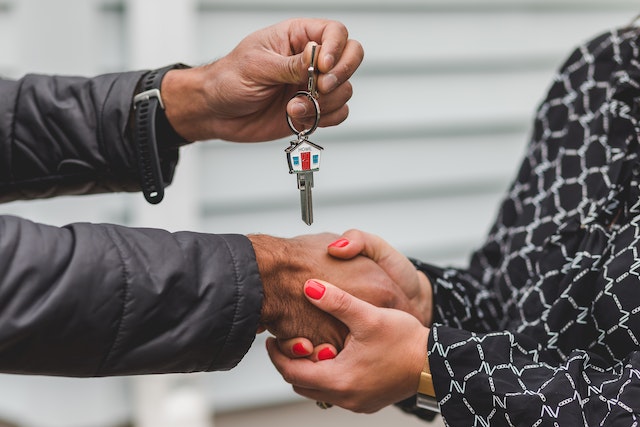Welcome to the innovative world of home swapping, a game-changing approach adding a new dimension to buying and selling homes. In an era where real estate is still considered the best long-term investment, understanding alternative and potentially beneficial methods of property transactions is crucial. It offers an exciting yet practical solution for homeowners transitioning between properties. This blog post aims to provide a comprehensive understanding of home swapping, delve into its effect on traditional real estate practices, and explore whether it could shape the future of buying and selling properties. So, whether you’re a seasoned investor or just curious about real estate trends, read on to discover how home swapping revolutionizes the real estate landscape.
Understanding Home Swapping: The Basics
Home swapping, as the name suggests, involves two homeowners agreeing to swap their homes with each other, often eliminating the need for a traditional real estate transaction. This method breaks from the conventional practice of buying and selling homes, offering an innovative and potentially beneficial alternative.
Unlike the traditional route of selling one’s house before purchasing another, home swapping lets homeowners simultaneously buy and sell, avoiding needing a temporary residence during the transition. It requires that both parties’ homes fit each other’s value, location, and size requirements, among other factors.
Moreover, with the rise of smart homes and the impact of technology on home sales, home swapping has gained even more traction. Technological advancements allow potential swappers to virtually tour properties, analyze values, and connect with possible swap partners more easily. That facilitates the search process and enhances the efficiency of the entire home-swapping transaction.
However, while this process can offer several advantages, such as reduced transaction costs and a more streamlined moving process, it comes with challenges. Factors like matching property values, coordinating timing, and addressing mortgage-related issues must be considered. Expert legal and real estate advice is often recommended to navigate these potential pitfalls.
Home swapping offers a unique twist to the traditional real estate transaction, fueled by the rise of smart homes and technological advancements in the real estate sector. Yet, as with any transaction, due diligence and careful consideration are crucial for a successful swap.
Why Home Swapping is Revolutionizing Buying and Selling Homes
While still prevalent, the traditional route of buying or selling properties often presents numerous challenges and potential pitfalls that buyers must navigate. Buyers’ common mistakes range from miscalculating financials to rushing the process, leading to less-than-ideal outcomes. However, the advent of home swapping is dramatically changing this landscape.
Addressing these common issues brings a fresh perspective to buying or selling a home. Allowing homeowners to buy and sell simultaneously reduces the risk of being stuck with two mortgages or, conversely, being left without a place to live while searching for a new home. That can ease the financial strain often associated with traditional transactions and save time.
Moreover, home swapping enables direct interaction between buyers and sellers, allowing for a transparent negotiation process that leaves little room for misunderstanding or miscommunication. It also allows homeowners to find properties that might not be available on the open market, expanding their options.
In essence, the introduction of home swapping into the real estate industry is shifting the dynamics of buying and selling homes, presenting a viable alternative to the traditional process. This innovative approach minimizes the potential pitfalls of conventional transactions, making it a revolutionary step forward in the real estate market.
Step-by-Step Guide to Home Swapping
Although innovative and exciting, the process of property swapping might seem complex to those unfamiliar with it. We have compiled a comprehensive step-by-step guide to demystify the procedure and empower you to make informed decisions. This guide will lead you through various stages, from initial research to the final move. So, if you’re considering this unique approach, this guide is for you.
Starting the Home Swapping Process
Your journey into the world of home swapping begins with a detailed assessment of your requirements. Identifying crucial factors such as property location, size, value, and other specifications can greatly streamline your search. Online platforms dedicated to swaps can prove beneficial at this stage. Alternatively, you might choose to engage a well-versed real estate agent in these transactions. After all, to ensure a successful swap, it’s critical to be clear about your preferences from the outset.
Precautions and Considerations
Home swapping is a nuanced process that requires careful thought and preparation. It’s vital to consider the legal and financial aspects of the transaction. Understand the implications of mortgages, insurance, and taxes. Furthermore, coordinating the timing of your move with your swap partners is crucial. Your lifestyles, family requirements, and professional commitments should align for a seamless transition. All these aspects must be handled delicately to prevent any potential hiccups.
Finding a Suitable Swap Partner
With your requirements outlined, the next step is to find a swap partner whose property and circumstances match yours. This process could take some time and necessitates patience and diligence. Engage with potential swap partners, discuss the specifics of your respective properties, and understand their expectations. Remember, it’s okay to back out if the swap doesn’t seem perfect. The goal is to find a match that benefits both parties equally.
Consultation and Documentation
Once you find a suitable swap partner, the next step is to consult with legal and real estate experts. That helps ensure that all legalities are in order, the agreement is fair, and your interests are protected. It’s necessary to document every part of your agreement, from home value and move-in dates to property condition and maintenance responsibilities, to avoid any future disagreements or misunderstandings.
Moving and Packing Advice
The final step in hose swapping is moving into your new home. This process can be daunting, but a little help from moving professionals can go a long way. For instance, experts like Miracle Movers, known for their moving expertise, often suggest creating a detailed moving checklist to keep your moving process organized and stress-free. They stress the importance of proper packing, secure transportation, and intelligent storage solutions, which can significantly reduce the burden of the move.
In truth, home swapping might initially appear to be a complex process, but you can navigate it successfully with careful planning and by following this comprehensive step-by-step guide. The key to a successful swap is meticulous preparation, clear communication, and informed decision-making.
Conclusion: Is Home Swapping the Future of Buying and Selling Homes?
In our exploration of home swapping, we’ve uncovered the unique opportunities it presents in buying and selling homes. As an innovative, streamlined, and potentially beneficial alternative, it’s creating new pathways in a market long dominated by traditional real estate transactions. While it’s not without challenges, with careful planning and guidance, home swapping can offer a positive experience. As we continue to embrace advancements and innovations in the real estate sector, home swapping may shape the future of real estate. So, whether you’re an investor or a homeowner, keep an open mind towards this unconventional approach – it might just be the game-changer you’re looking for.

